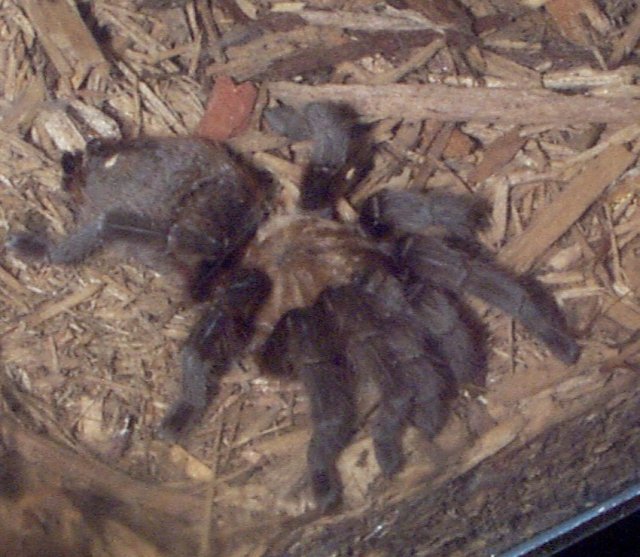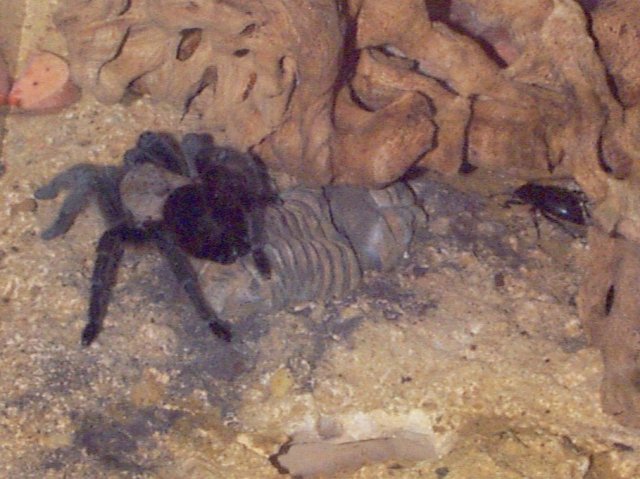| Name: Texas Tarantula | |
| Scientific Name: Aphonopelma hentzi | |
| Range: North America (Texas) | |
| Habitat: Under rocks and in abandoned mouse borrows. | |
| Status: Not threatened | |
| Diet in the wild: Some might raid nests and eat young chicks, but mostly eat insects. | |
| Diet in the zoo: Insect diet- earthworms, meal worms, and crickets. | |
| Location in the Zoo: In the James R. Record Aquarium (Insect City) and in the Texas Wild Exhibit. |


